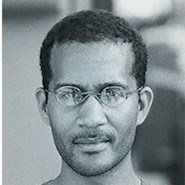By T.R. Witcher
During the 1930s New Deal era, the United States’ Works Progress Administration (later renamed the Work Projects Administration) built hundreds of post offices across the country. One of those was built in downtown Burlingame, California, a small community just south of the San Francisco International Airport, which opened in 1927. The town’s historic post office (its sixth downtown post office building, according to the Burlingame Historical Society) was designed by architect Ulysses Floyd Rible in a Spanish eclectic style with art deco elements and constructed from 1941 to 1942.
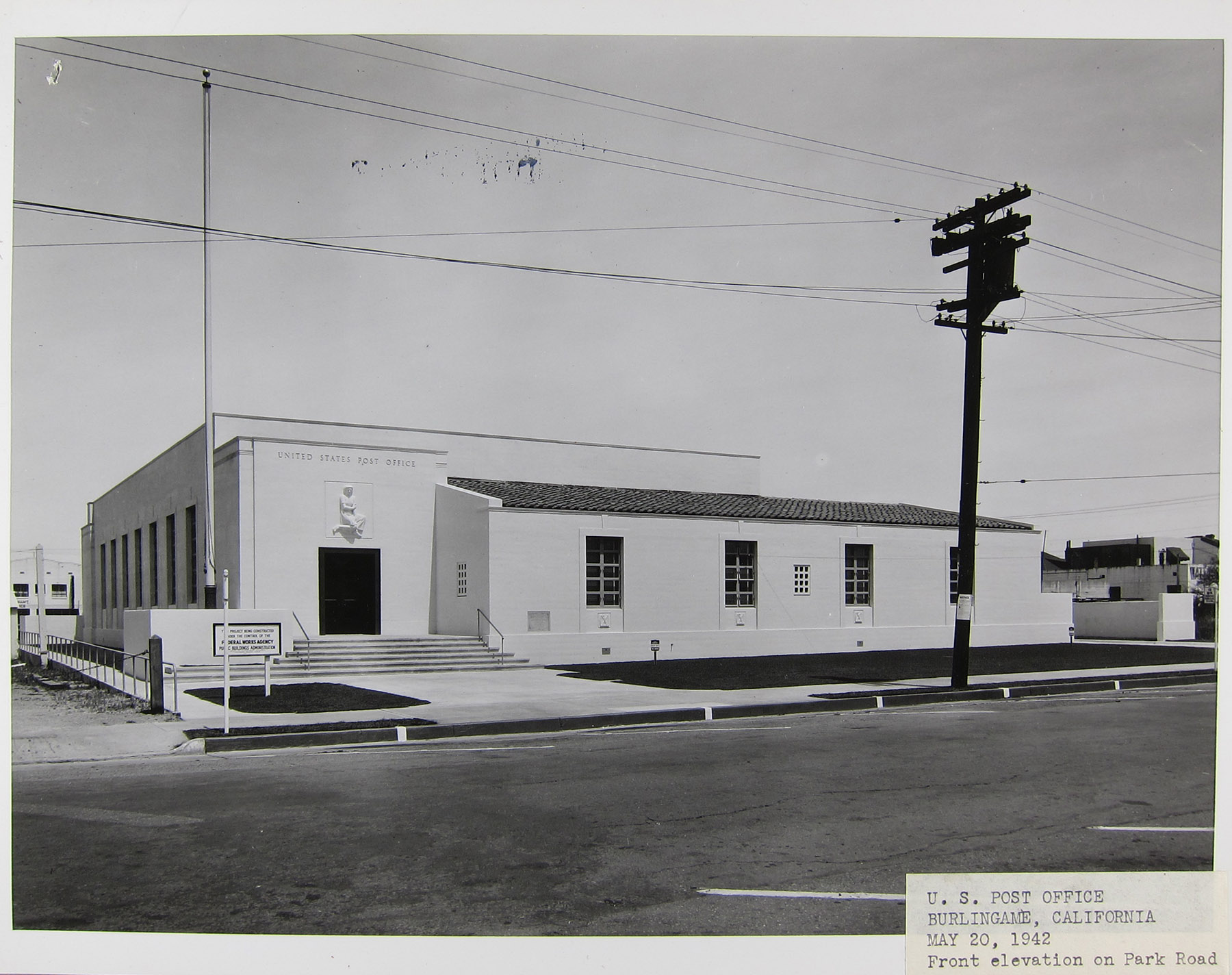
For years, the U.S. Postal Service has been deaccessioning the historic post offices built during this era. When the Burlingame Post Office was finally sold in 2014, it triggered a preservation covenant. Under the National Historic Preservation Act of 1966, anyone planning to develop federally owned historic buildings is required to consult with the preservation community and interested parties. The federal government delegates responsibility to the state historic preservation offices to devise ways to protect buildings’ historic significance.
Character-defining features
In 2019, Dostart Development Co. LLC and Sares Regis Group of Northern California entered into a 50-50 joint venture to develop the historic Burlingame Post Office site, situated between the city’s Park Road and Lorton Avenue, by integrating parts of the old post office with a new office building.
The one-story post office building, broadly, consists of a lobby wing and two parallel wings facing Park Road and Lorton Avenue — together creating a U shape — with a large sorting room filling the center of that volume.
Architecture and preservation firm Page & Turnbull conducted an evaluation of the property and completed a historic report. According to H. Ruth Todd, FAIA, AICP, LEED AP, a Page & Turnbull principal, architectural historians at the firm studied the building’s essential features, and architects then mapped those features in plan and elevation with color coding and hierarchy references to indicate where designers could easily introduce changes to the building and where changes would either not be a good idea or needed careful consideration.
As a result of that process, an L-shaped portion of the building — one leg constituting the main lobby for visitors and the other leg constituting a “postmaster’s wing” of administrative space — was prioritized to remain.
Page & Turnbull’s report on the post office also identified several “character-defining” features on the building’s interior: original hanging ceiling light fixtures; marble wainscoting, including marble on the vestibule walls; metal trim and grill work; brass postal boxes and the original bronze bulletin board; and terrazzo flooring.
There were also important elements on the building’s exterior: the overall mass and plan of the Park Road facade, poured concrete exterior siding and smooth stucco wall cladding, original metal-frame windows and bronze doors, and the red clay tile roof. In addition, the exterior features sculpted artwork, including cast-stone art deco eagle sculptures under the windows along the lobby wing, and two cast-stone reliefs, titled The Letter, by artist James L. Hansen, above the lobby wing entrances.
As Todd notes, there is no significant architectural fabric in the postmaster wing to preserve, but the exterior walls, windows, and roof tile will be preserved and reused as important components of the historic building’s composition.
The giant sorting room was deemed not architecturally significant and will be demolished. Additionally, the wing parallel to the lobby on the other side of the building was demolished to free up room for the new addition. This section of the building’s roof tiles and marble will be salvaged in case Page & Turnbull need them for repair work on the remaining building.
Blending old and new
The old post office will be converted to retail space. The new six-story building will provide 168,000 sq ft of office space and 17,000 sq ft of ground-floor retail on the site’s Lorton Avenue side, a pedestrian-friendly thoroughfare of small shops. Two levels of underground parking and a public park will be added to the site.
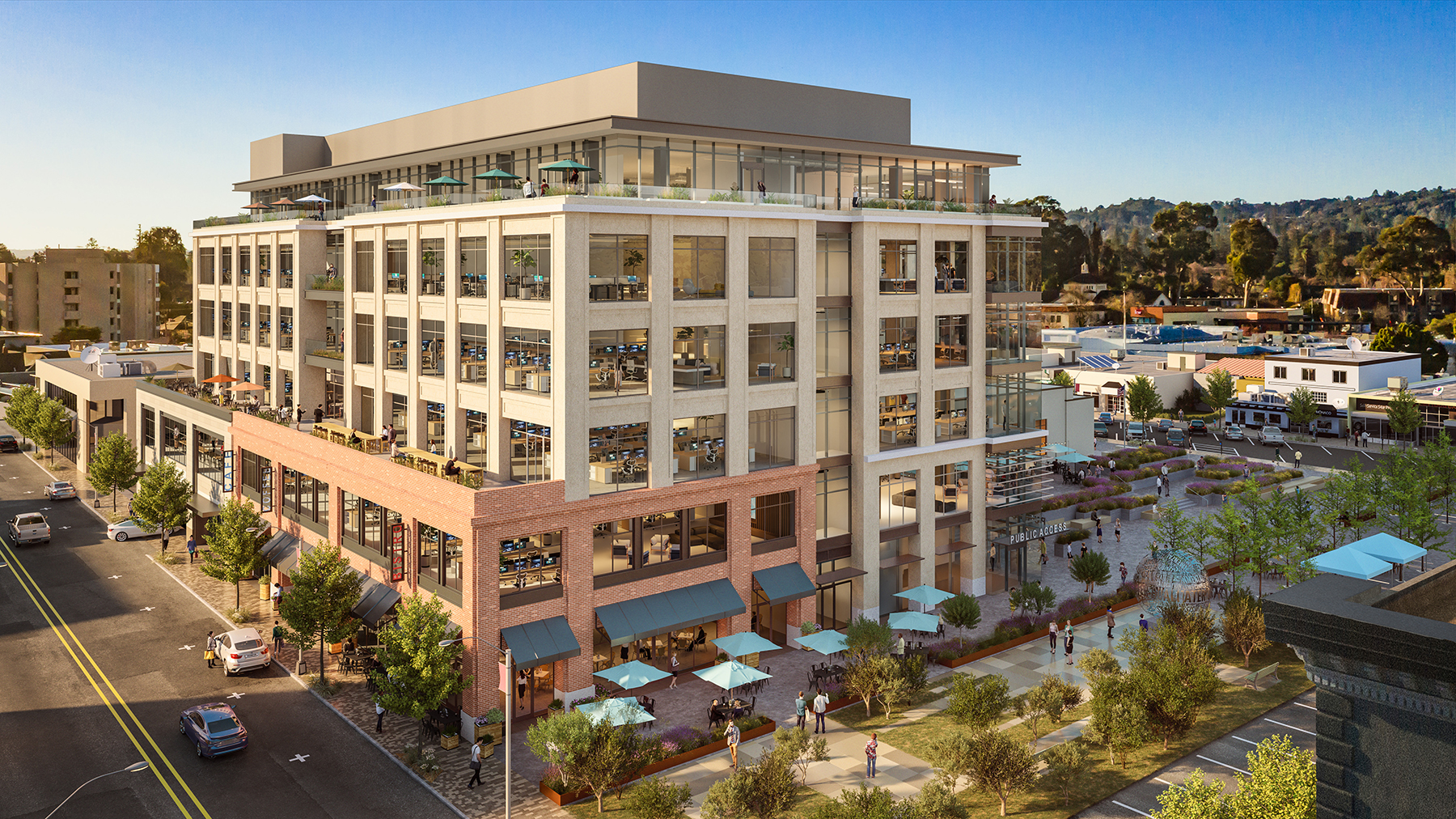
Ted Korth, a principal with KSH Architects, the firm designing the project, explains that the massing and rectangular character of the post office building informed the design of the new addition. The new building also had to fit in with the human scale of Lorton Avenue. He says the architects had to consider: How best can one design a big building that fits in with the context that’s there?
The answer was to develop the first two floors in a way that defined a two-story base, along Lorton, and introduced several different materials to define the separate building volumes: Traditional-looking limestone and brick will be used at the two-story base, and a more modern facade will be used above. Building materials for the portion of the building above the two-story base will include glass fiber reinforced concrete panels, clear glass, and aluminum window frames. The building will step back as it rises, and the top floor will be all glass.
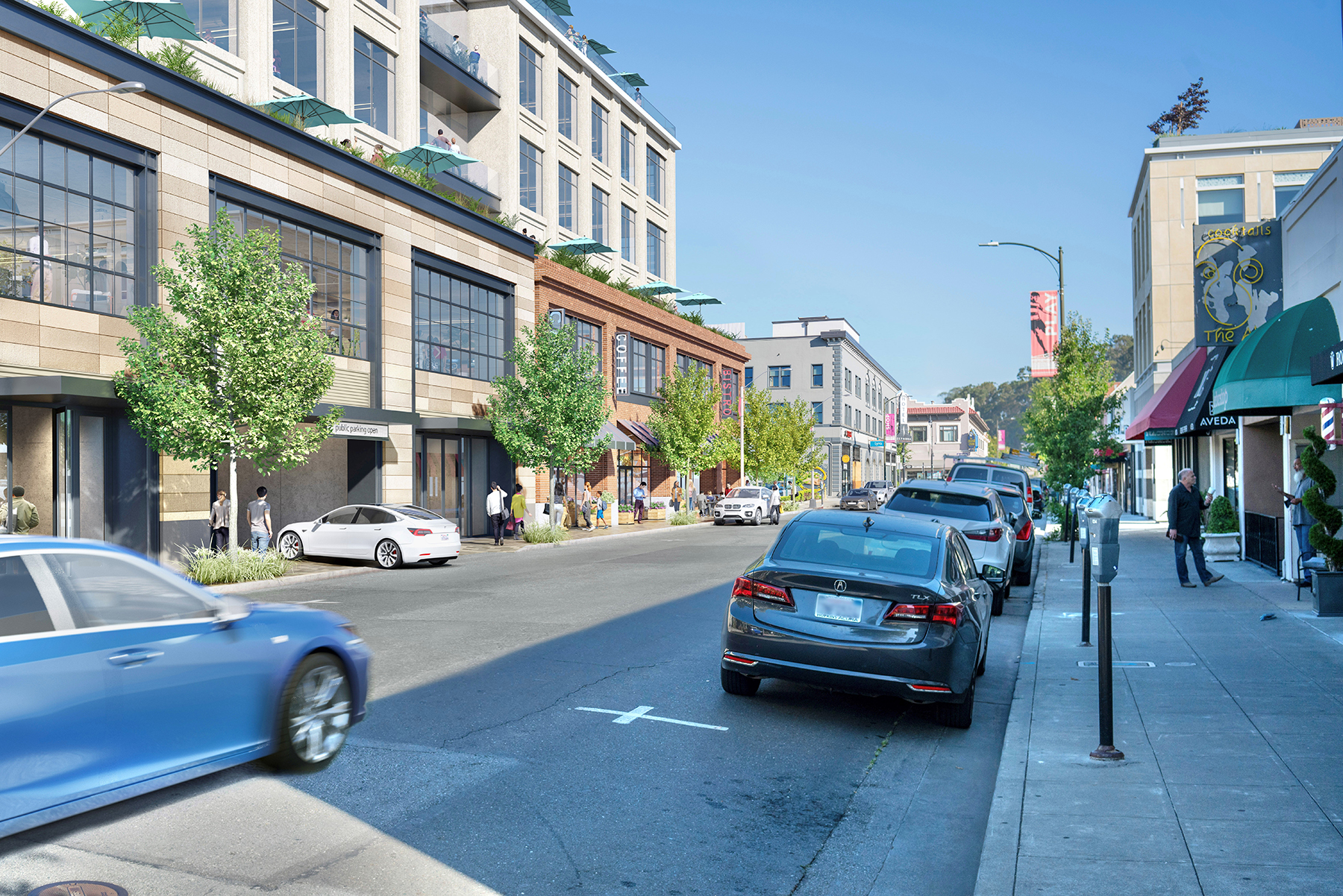
“Even though it’s a big building, it is designed to be sympathetic to the context around the site,” says Korth. “We set everything back, so the new building respects the historical post office, so it still presents as a free-standing building.”
The full length of the historic lobby will be retained, as will its seven bays of fenestration. A new terrace — one of several planned in the new project — will be sited along the lobby wing. Doors installed in the existing window bays will connect the lobby space to the terrace, which will connect to the planned park. (The existing eagle sculptures will be relocated.)
“We didn’t want a project where only the facade of the old building remains and it feels artificial,” says Korth. “The project celebrates the integrity and significance of the historical post office.”
Moving the post office
But the big challenge was what to do with the old post office building while those two stories of underground parking were being excavated.
Jim Salata, the owner and president of San Jose, California-based Garden City Construction, recalls that developers on their first meeting had the “wild idea” to install piers underneath the post office building and keep it suspended in place in midair as the two-story garage was constructed. He cautioned against it. The project would have been very difficult to excavate, and the piers would have required removal. “It’s a narrow building,” he says. “You hit a pier, it’s going to fall down.”
He proposed a more audacious idea: moving the post office portion that is being retained off its podium and then moving it back. “They thought I was crazy.”
To do this, the building would have to be taken apart in several stages. The first stage was shoring giant concrete beams at the sorting room. Then, workers saw-cut a 1 ft slot at the roof and another at the floor to detach the sorting room from the postmaster and lobby wings. In regard to the postmaster wing, Salata says, “The team decided to save two walls and not move the entire wing. So we cut those walls loose — the long wall that fronts Park Road and a short, perpendicular end wall. (They) have already been placed on steel beams and moved to the parking lane on Park Road in front of the site.”
San Francisco-based structural engineering firm IMEG is the engineer of record for the structural work on the project. According to Ramon Khouri, P.E., S.E., M.ASCE, a senior structural engineer at IMEG, the existing post office building consists of a concrete roof slab and beam structure supported by perimeter concrete walls and interior columns. The post office’s lobby, he continues, which is being repurposed as retail in the new office building, was cut in a rectangular section that left it with a large diaphragm aspect ratio, approximately 21 ft by 122 ft in plan dimension.
“Given the aspect ratio and the existing diaphragm capacity, we determined early on that the post office needed to be laterally braced in the transverse direction by the new concrete office building to meet the 2019 California Building (Standards) Code lateral seismic requirements,” says Khouri. “In the longitudinal direction, the perimeter side of the existing structure has 12 in. thick wall piers that provide good lateral load resistance.”
However, on the interior — cut — side of the building, only minimal existing walls were available, Khouri explains. “As such, we added new infill concrete shear walls that tied to the existing roof slab and columns.”
The post office will be moved back into position and anchored to a new podium structure above the two basement levels of parking.
To move the lobby wing, Garden City drilled several piers and steel beams to span a concrete box culvert on the site. In February, the lobby wing was raised up by hydraulic jacks, placed on rails, and moved over the culvert to a temporary resting place where it will remain for approximately 13 months while the new mid-rise is being built. Then it will be moved back to its final resting place on the podium, attached to it and the new mid-rise building, and restored in place.
(Other important players on the work include Devcon Construction, which is doing the new construction, and Duquette Engineering, which is providing all construction engineering on the project. Duquette worked with Garden City on planning the move sequencing of the post office and provided the structural engineering of the temporary supports for the walls that are being saved as well as the structural engineering for the shoring and rails that the post office will be moved onto, according to the firm’s president, Steven P. Duquette, S.E.)
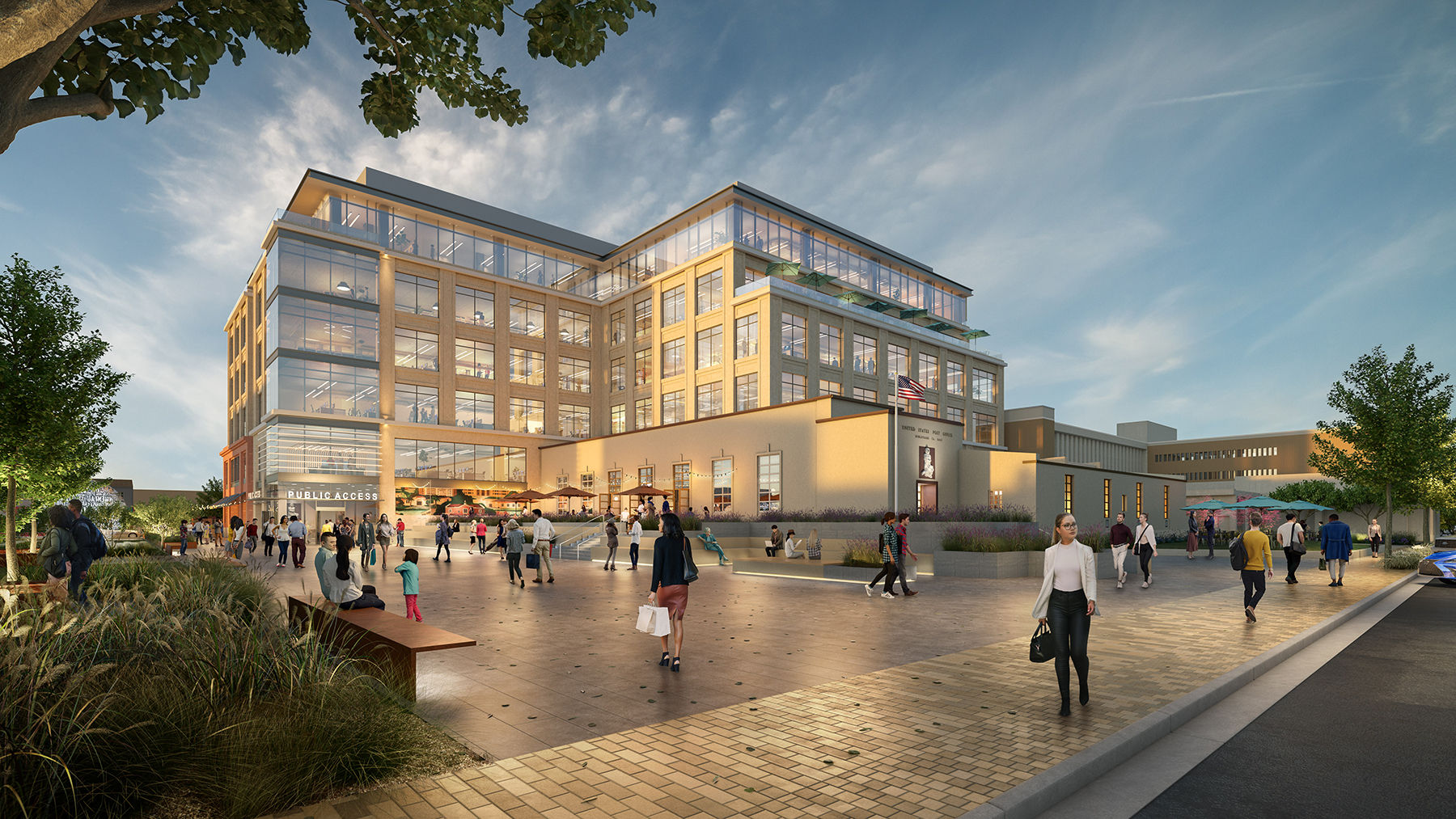
Lastly, that concrete box culvert, located in the adjacent parking lot, has proved to be a “pretty tremendous constraint,” says Jason Mansfield, P.E., an associate with BKF Engineers, a civil engineering firm that is serving as the civil engineer of record on the project. The challenges involve “physically being so proximate to our underground parking garage, trying to find out how close we can get the shoring piles without hitting the culvert, and then grading over it, because it is so shallow, to make sure we get positive drainage from the site.”
BKF was tasked with locating those piles so they didn’t hit the box culvert as well as monitoring the culvert and an adjacent building for cracks as construction continues.
The tight site constraints will also make managing stormwater treatment of impervious surface runoff nearly impossible. To compensate, BKF plans to use Silva Cells underneath the sidewalks on Lorton Avenue to treat public right-of-way runoff. These cells use soil volumes and a modular suspended pavement system to support large tree growth and stormwater management through absorption, evapotranspiration, and interception.
The building is scheduled to be complete in late 2023, with exterior and site improvements running into early 2024.



